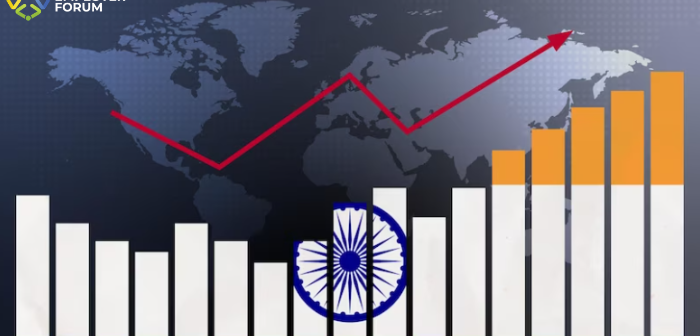In an era of unprecedented global connectivity, the intricate interplay between demographic dynamics and economic prosperity is reshaping the landscape of nations. At the forefront of this transformation is India, a country endowed with a demographic dividend that holds the promise of driving growth in an ageing world. As we navigate the complexities of a global village with fluid borders, the strategic promotion of workforce mobility emerges as a linchpin for sustained economic vitality, profoundly influencing the global economic landscape.
India’s Demographic Dividend: A Strategic Asset
India’s demographic profile stands as a strategic asset in the global economy. With a median age of around 28 years, the nation boasts a burgeoning population of young and skilled individuals, offering a reservoir of human capital poised to energise economic development. This demographic dividend, characterised by a higher proportion of working-age individuals, positions India as a dynamic player on the global stage, significantly impacting the global economic landscape.
The Ageing World Population: A Challenge and Opportunity
Conversely, several developed nations are grappling with the challenges of an ageing population. Countries in Europe, Canada, and Australia are witnessing demographic shifts that present both challenges and opportunities. Concerns about labour shortages and declining workforce productivity are prompting a reevaluation of economic strategies, with a focus on adapting to the changing dynamics of the global labour market, influencing the global economic landscape.
Workforce Mobility as a Solution
In response to these challenges, an increasingly prevalent solution is the promotion of workforce mobility. Nations with ageing populations are revisiting their immigration policies and actively encouraging the influx of skilled workers from around the world, including India. This shift toward international talent exchange not only addresses labour shortages but also fosters diversity, innovation, and cross-cultural collaboration, playing a pivotal role in shaping the global economic landscape.
Embracing Fluid Borders: A Paradigm Shift
The concept of fluid borders reflects the evolving nature of the global economy. Nations are recognizing the value of a diverse and skilled workforce and are adapting policies to facilitate the movement of talent across borders. This paradigm shift is not only crucial for addressing immediate labour market needs but also for creating an environment that encourages the seamless flow of skills, ideas, and expertise, thereby influencing the global economic landscape.
Europe, Canada, and Australia as Trailblazers
Leading the charge in embracing workforce mobility are countries such as Germany, Canada, and Australia. Their proactive approach to immigration and work visas has proven instrumental in filling critical skill gaps, fostering economic vitality, and contributing to global innovation. These nations serve as exemplars, demonstrating the positive outcomes of an open and globally integrated approach to talent acquisition, significantly impacting the global economic landscape.
The Road Ahead for India: Positioning for Global Talent Leadership
For India, the challenge lies in capitalising on its demographic dividend by facilitating international mobility for its skilled workforce. Strategic collaborations, bilateral agreements, and policies that encourage cross-border talent exchange will be crucial in positioning India as a global talent hub. The emphasis should be on nurturing an environment that not only retains talent but also attracts professionals from around the world, thus influencing the global economic landscape.
In conclusion, as the world becomes smaller with fluid borders, India’s demographic dividend assumes a critical role in shaping the global economic landscape. By embracing workforce mobility, nations can tap into the vast pool of talent that India offers, creating a win-win situation for both the sending and receiving countries. As the global village expands, the free movement of skilled professionals is not just a trend but a necessity for sustainable economic growth in the 21st century. In fostering a collaborative and globally integrated approach, nations can navigate the challenges of an ageing world population and unlock the full potential of a connected and dynamic global workforce, profoundly shaping the global economic landscape.
References:
- India’s demographic dividend | Thomson Reuters | July 2016
- Reaping the demographic dividend | EY India | Apr 2023
- Inclusive India 2047: Empowering the Demographic Dividend | Business Today | Aug 2023
You might also be interested to read:The Future of Compliance in Supply Chain Management




